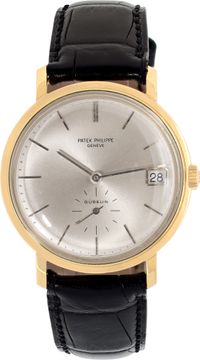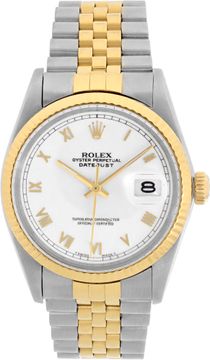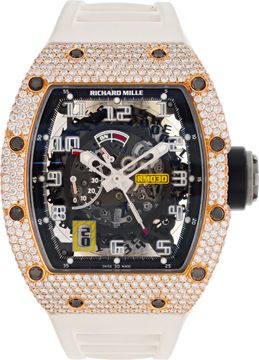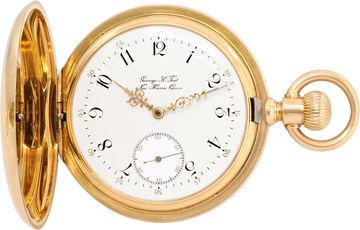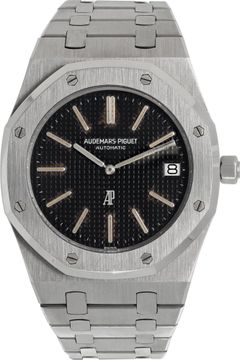Back to Basics: What is a GMT Watch?

Welcome to our new series called Back to Basics where we explore and answer some of the most common questions about watches and timekeeping. To fully appreciate the technical marvels that luxury watches often are, it’s important to understand the foundation of what makes them tick, so to speak. As you may know, there are countless types of watches out there from the basic time-only models to super complex timepieces. Remember, any additional function added to a watch beside indicating the time is called a “complication”, which is fitting since they truly are complicated to make. So join us on this discovery and hopefully you’ll gain an even bigger appreciation for fine watches and learn a thing or two on the way.
In our first installment, we take a look at the GMT watch. No doubt you would have heard about these watches, but what is a GMT watch exactly? Read on to learn about this very practical type of timepiece and discover some popular GMT watches.
What is a GMT watch and Why Does it Matter?
Before we get to explaining what a GMT watch is, we have to define GMT. GMT stands for Greenwich Mean Time and it is the mean solar time at the Royal Observatory in Greenwich, London. For a long time, GMT was used as the international civil time standard and other time zones were defined in relation to it. For instance, New York is GMT-5, Hong Kong is GMT+8, and so on. Today, we use the term Coordinated Universal Time (UTC) rather than GMT, but it’s essentially the same time as GMT.

So in theory, a GMT watch is one that can indicate your local time and GMT time simultaneously. This is typically done via an extra GMT-hand (also referred to as the 24-hour hand) on the dial that points to a 24-hour scale. The 24-hour time is often displayed on the bezel of the watch, but not always. So, using a correctly set GMT watch, a wearer can quickly see that it’s (for example) 3pm locally in New York City and 10pm GMT–the hour and minutes hand would display 3pm and the GMT hand would point to 22 hours on the scale.

However, it’s worth noting that for day-to-day practicality, wearers often do not set their GMT-hand to GMT time, but rather, another time zone that’s relevant to them. For instance, travelers can set their 24-hand to point to their home time while their main hour and minute hands are set to their current local time.
As you can see, the GMT watch is a practical timepiece to have on hand, particularly for travelers or those who need to know the time in another city. With that, let’s explore some examples of GMT watches.
Rolex GMT-Master and GMT-Master II
Undoubtedly the most famous GMT watch of them all, the Rolex GMT-Master dates back to the early 1950s when Pan Am airlines commissioned a watch for their pilots to keep track of multiple time zones. And in 1953, Rolex unveiled the GMT-Master pilot’s watch to do just that.
The hallmarks of that inaugural GMT-Master included a stainless steel case, a bi-colored red and blue 24-hour rotating bezel (eventually nicknamed the “Pepsi”), an extra 24-hour hand, a date window, and a stainless steel bracelet. The 24-hour hand and the center hand move together when the time is set, so it’s the bezel that has to be turned to have the 24-hour hand point to the correct hour in another city.

Over the following years, Rolex enhanced the GMT-Master collection to include yellow gold models, two-tone models, and even gem-set pieces. There were also other bezel colors presented, such as the bi-colored brown and beige “Rootbeer,” solid black ones, and blue and black “Batman” ones. In the early 1980s, Rolex introduced the GMT-Master II with a black and red “Coke” bezel. While it looked similar to the GMT-Master, the GMT-Master II allows the wearer to keep track of three time zones rather than just two. This is because the 24-hour hand is adjustable independently from the center hour hand. So the center hour hands could indicate local time, the 24-hour hand could point to home time, and to tell the time in another location, the wearer turns the bezel by the appropriate number of hours (forward or backward).
This particular GMT-Master II ref. 16710 from the late 1990s, features the characteristic 40mm Oyster case in stainless steel, a solid black aluminum bezel, and the matching black dial with large lume plots and luminescent Mercedes-style hands. There’s of course also the date window at 3 o’clock magnified by the Cyclops window and the sporty Oyster bracelet. A true classic Rolex classic.
Omega Seamaster 300m Co-Axial GMT
The Seamaster 300m Co-Axial GMT is a particularly appealing offering from Omega as it merges the robustness of a dive watch together with the practicality of an additional time zone. As a dive watch that can plunge down to 300 meters, this Omega Seamaster includes a unidirectional diver’s bezel, a helium escape valve, and excellent luminescence under low light. The attractive wave pattern on the dial housed within the 41mm stainless steel case is a superb design touch.

Since the bezel is a unidirectional one marked with minutes to indicate elapsed dive times, the 24-hour scale to use in conjunction with the red GMT-hand is located on the dial instead, adjacent to the round luminescent hour markers. Plus, there’s also a date window at 3 o’clock. All of these functions are powered by the Co-Axial Caliber 2628, which can be seen via the exhibition caseback.
Panerai Radiomir GMT
Often considered as Panerai’s dressier watch compared to the more robust Luminor, the Radiomir is a popular option for those who want a more refined Panerai watch. While many Panerai watches are only time-only models, this particular Radiomir GMT PAM00242 boasts much more practicality.

The first thing you’ll notice about the watch is that it has two crowns on its 45mm stainless steel case. The crown at 2 o’clock is used to rotate the internal bi-directional 24-hour bezel running along the periphery of the dial. Therefore, this way, Panerai can offer the GMT functionality without sacrificing the clean case designs they are known for. Also on the black dial are the date window at 3 o’clock and the running seconds subdial at 9 o’clock. The Panerai Radiomir GMT PAM00242 is, in fact, a limited edition model, and this example is #81 out of 300 pieces.
Whichever GMT watch style and brand you opt for, it’s clear that this is one of the most practical timepieces to own. Stay tuned for our next installment of Back to Basics where we’ll delve into the Perpetual Calendar watch.
Designer Engagement Rings That’ll Wow Your Future Bride
NEXT ARTICLE
The Best Watches of SIHH 2018
